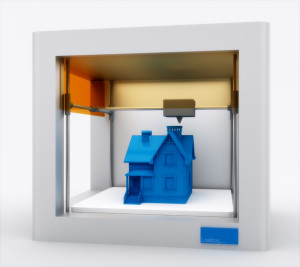3D Printed Houses – stepping on the forbidden lawns?
 Last weekend we had a minor crisis at 3d Printer Plans. The BBC linked to a feature that we had carried on WinSun of China who have demonstrated the ability to produced 3d printed houses. Such was the subsequent explosion of visitor numbers that the site briefly crashed until our trusty technician had delivered more bandwidth. We of course apologise for any inconvenience.
Last weekend we had a minor crisis at 3d Printer Plans. The BBC linked to a feature that we had carried on WinSun of China who have demonstrated the ability to produced 3d printed houses. Such was the subsequent explosion of visitor numbers that the site briefly crashed until our trusty technician had delivered more bandwidth. We of course apologise for any inconvenience.
The above reminds us of a number of things, but in particular it is an insight into the global crisis of housing affordability. New Zealand, where 3dinsider.com is based, is an offender ‘par-excellence’ with house prices in the major urban centres now at ridiculous multiples of income. One of the benefits we would suggest of having an ex banker as Prime Minister! Oversee massive domestic credit creation (and augment this with debt issuance looking for a home from overseas) and where does it tend to end up – in housing of course. Around the western world and beyond young noses are pressed up against the windows of real estimate agents knowing they cannot participate in the great property Shangri La. A tragic dissonance – between those with property and those without – now splits society with the young being the greatest losers. A word of advice to the smug house-price obsessed ‘owners’ though. Housing is a sitting duck for ruinous taxation in the form of tribute going forward, just be patient and bide your time.
 So back to 3d printed houses as a possible solution to the nightmare of finding an affordable place of one’s own. In my previous exegesis I hypothesized that 3d printing technology might unleash a deflationary bias with intrinsic similarities to the Victorian era of innovation and industrial process. The counterweight is found in the lack of any effective constraint on credit creation and we have seen governments ‘various’ attempt to offset excess debt by creating (you’ve guessed it) more debt. It can be powerfully argued that this is why house prices continue to rise, despite real incomes etc falling in most western countries. There is also, of course, the important phenomenon of capital flight as smart money from Russia and China etc hedges its bets via property ‘bolt-holes’ in places as geographically diverse as London and Auckland. Where WinSun have done us an important service is to help in the understanding that a roof over one’s head need not be expensive in fundamental terms. They have given an important glimmer of hope for the young and those of modest means. Perhaps this is why the feature elicited such huge interest.
So back to 3d printed houses as a possible solution to the nightmare of finding an affordable place of one’s own. In my previous exegesis I hypothesized that 3d printing technology might unleash a deflationary bias with intrinsic similarities to the Victorian era of innovation and industrial process. The counterweight is found in the lack of any effective constraint on credit creation and we have seen governments ‘various’ attempt to offset excess debt by creating (you’ve guessed it) more debt. It can be powerfully argued that this is why house prices continue to rise, despite real incomes etc falling in most western countries. There is also, of course, the important phenomenon of capital flight as smart money from Russia and China etc hedges its bets via property ‘bolt-holes’ in places as geographically diverse as London and Auckland. Where WinSun have done us an important service is to help in the understanding that a roof over one’s head need not be expensive in fundamental terms. They have given an important glimmer of hope for the young and those of modest means. Perhaps this is why the feature elicited such huge interest.
At this stage it is easy to criticize 3d printed homes as being rather utilitarian and ‘noddy’ but dare we suggest they are symbolic of something much more important than mere aesthetics. Moreover, we have every confidence that visual appeal and individuality will follow in due course. To advance affordable housing is to “tread on the forbidden lawns” because so many inter-connected vested interests benefit from the debt enslavement associated with current property madness. At the head of the table, naturally, are found the bankers who are only too pleased to see people stuck with huge mortgages on what is frequently rubbish. Just look at the New Zealand ‘leaky homes’ fiasco. After all, if it all goes wrong their vassals in the political scene can generally be commanded to bail them out. Then come all the other interests who each take their cut on the absurdly overpriced millstones that houses have become. In New Zealand’s case we even have a defacto unrealized capital gains tax via the rating system on which an additional tax (GST) is then levied. That’s right readers – a tax upon a tax. Imagine what would happen if house prices returned to historic New Zealand norms of around two to three times income. The teat, upon which so many self-serving interests suck, would soon run dry of that sweet milk called tribute.
If embryonic 3dprinting of homes does us a true favour it will not be found in a few experimental residences being bunged up somewhere. It will not be found in fantasies encouraged by sloppy journalism about a house just appearing overnight by magic. These are cognitive diversions. It will be found in revolutionary thinking – a Damascene moment – led by the young as they demand to know why a modest home is beyond their reach despite embracing education, hard work, and saving. They will think – and in consequence they will print.

